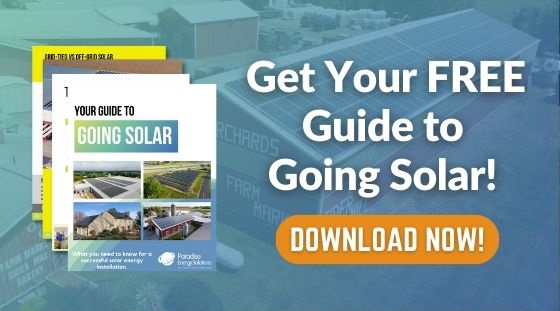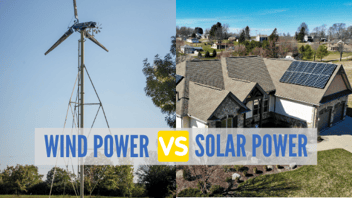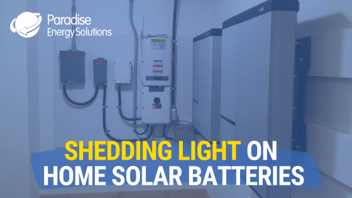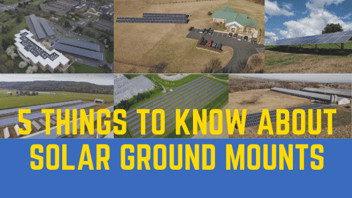What are the maintenance costs for a solar system?
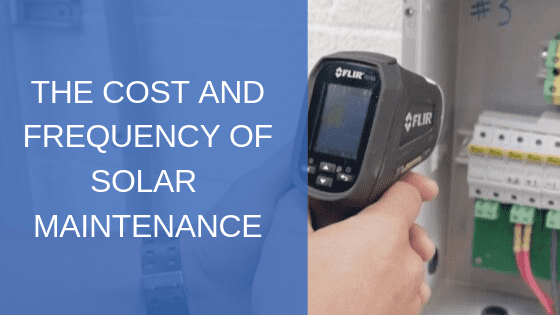
Do solar panels or PV solar systems need maintenance, and if so, how often and how much will it cost? If you’re considering installing a solar panel system, we bet these questions have crossed your mind. Understanding what kind of work solar is going to be after the switch is flipped on is an important thing to consider before you install.
In this blog, we’ll answer those questions so you know what to expect before making the commitment.
But first, we want to make a quick distinction. There are two types of maintenance we’ll talk about: solar panel maintenance and PV system maintenance. Solar panel maintenance will refer to things like cleaning dust or snow off your panels—routine things to maintain the health and productivity of your system. PV system maintenance, on the other hand, refers to making repairs and corrections to the PV system if something goes wrong.
What Maintenance is Required for Solar Energy Systems?
If properly installed, solar panel systems generally require little maintenance. However, they can still break down, just like all other technical or electronic equipment. Below, we highlight the most common issues with each of the major components of a solar panel system.
Solar Panel Maintenance Issues
The most frequent problems encountered with solar panels include soiling and damage caused by objects such as golf balls and stones. Light soiling on the panels can often be taken care of by simply spraying them with a garden hose. However, if you can't safely access your panels (PLEASE do NOT climb on your roof) or your panels have heavy soiling, it is best to call a professional solar panel cleaner.
If you do decide to DIY your panel cleaning, do NOT use abrasive brushes or any cleaning solvents. Doing so can cause damage to the panels and void your warranties.
Solar Inverter Maintenance Issues
Your solar inverters are the most common component to give you issues. They are a smart, technical device that is essentially the brains of the PV solar system, converting AC electricity into DC electricity that can be used in your home or business. Heat, lightning, utility power events, and manufacturing issues can all create issues for a solar inverter.
If an issue does occur, it will mostly come in the form of an arc fault or Ground Fault Circuit Interruption (GFCI).
Arc faults happen when there is a high power discharge of electricity between conductors, which can give off heat. This heat can break down the wire, which might start an electrical fire.
Because none of that sounds good, inverters are equipped with arc fault protection. If the inverter senses an arc fault, it shuts down to prevent it from getting out of hand and causing damage to your system or property—this is called fault mode.
Depending on your inverter, you might see an error message on the display to indicate your inverter is in fault mode.
GFCIs also affect inverters. If an electrical current finds a path to the ground, it will trigger a ground fault alert. When this happens, an inverter will shut down to keep everything safe.
GFCIs can be caused by excessive moisture in the junction box, broken panels, or damaged wiring (often caused by squirrels or other small and mischievous animals).
Other Common Maintenance Issues
Other common issues we encounter are communication issues—meaning your system is not talking to the internet—and damage from rodents. Squirrels love snacking on wires and building their homes under solar panels.
One of the best ways to minimize the need for PV system maintenance is by starting off on the right foot. Partnering with an experienced, reputable solar installer should be #1 when going solar. The benefits are twofold: you’re more likely to have a properly installed system with quality parts, and you’re more likely to be covered by effective warranties. Click here for five things to look for when choosing a solar installer.
While the best installer may not be the least expensive, your future self might thank you, and it could be cheaper in the long run.
But no matter how well your solar company installs your system, there are always going to be risks. Faulty equipment, acts of God, or just plain bad luck can cause your solar system some grief.
How do you know when your solar system requires maintenance?
If you suspect something is wrong with your solar system and may need PV system maintenance, a good place to start is to see what your system is producing. You can tell if your solar system is producing what it should by checking your solar system monitoring software or analyzing your electricity bill.
If your installer sets you up with system monitoring, you should be able to view historical production data. If you have a feeling something with your system is wrong, compare what your system was producing that month in previous years to what it’s producing now.
While solar panel degradation and changes in the weather may affect output, large discrepancies could indicate a problem. Some monitoring software even shows how much each panel is producing, helping your solar contractor see where the issue lies.
Watch this video to see what solar system monitoring software looks like and how to navigate it.
Don’t have access to a solar system monitoring system? You may be able to tell if something is wrong by looking at your electricity bill. Many utilities break out how much electricity you use each month and how much you draw from the grid. If you purchased a lot more electricity from the grid one month than you normally do, it’s possible your solar system is producing less electricity due to an issue.
Just be sure this increase in your electricity bill wasn’t caused by an explainable increase in power you used, like Christmas lights or a new piece of equipment.
How Much Does It Cost To Maintain A Solar Panel System?
Waiting for the call to hear how much a repair will cost can be one of the most nerve-wracking parts of your day or week. We’ve been there.
The bad news is that the cost of repairing your solar system varies widely. The good news is that if you buy quality parts and partner with an installer willing to stand behind their work with product and workmanship warranties, it won’t matter.
If repairs are needed, you can expect an hourly fee anywhere north of $100. More complex issues that require engineering support could cost $150+ an hour. This will include travel time to your location, time to diagnose the issue, and then time to fix the issue.
Another cost to consider is the cost of removing and reinstalling your panels should your roof need to be repaired or replaced. Depending on the system size, site conditions, and the full scope of required work, this could cost homeowners $3,000 to $10,000, while businesses could spend $20,000+.
Depending on which solar installer you choose, you may also be backed by a solar installer guarantee. These guarantees are in addition to the manufacturer's warranties and relate to the actual design and installation of your system. At Paradise Energy, our Triple Ten Guarantee protects your system above and beyond the manufacturer warranties of your equipment, keeping your panels working.
What Should You Do If Your Solar System Needs Maintenance?
PV system maintenance should always be performed by trained professionals using the proper safety equipment. These are electrical devices that can be harmful to the untrained without proper safety gear.
The first step is to call your installation company. If they do not offer maintenance services, other companies, like Paradise Energy Solutions, have teams dedicated to service calls to quickly address the issue.
For system owners with systems that are no longer under warranty, Paradise Energy Solutions provides Paradise Protect Plans. These plans offer ongoing peace of mind, ensuring that someone is monitoring and safeguarding your solar system.

